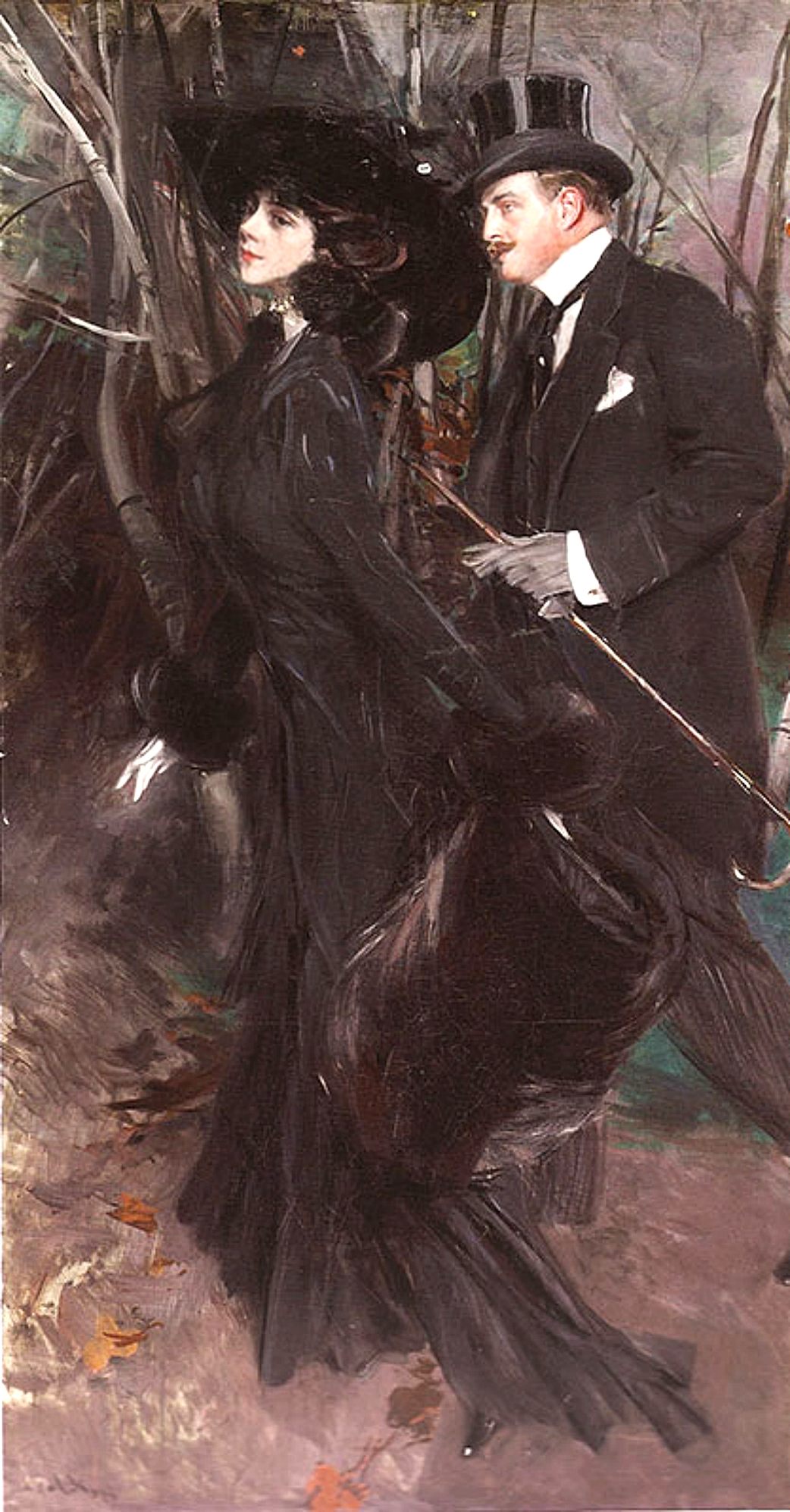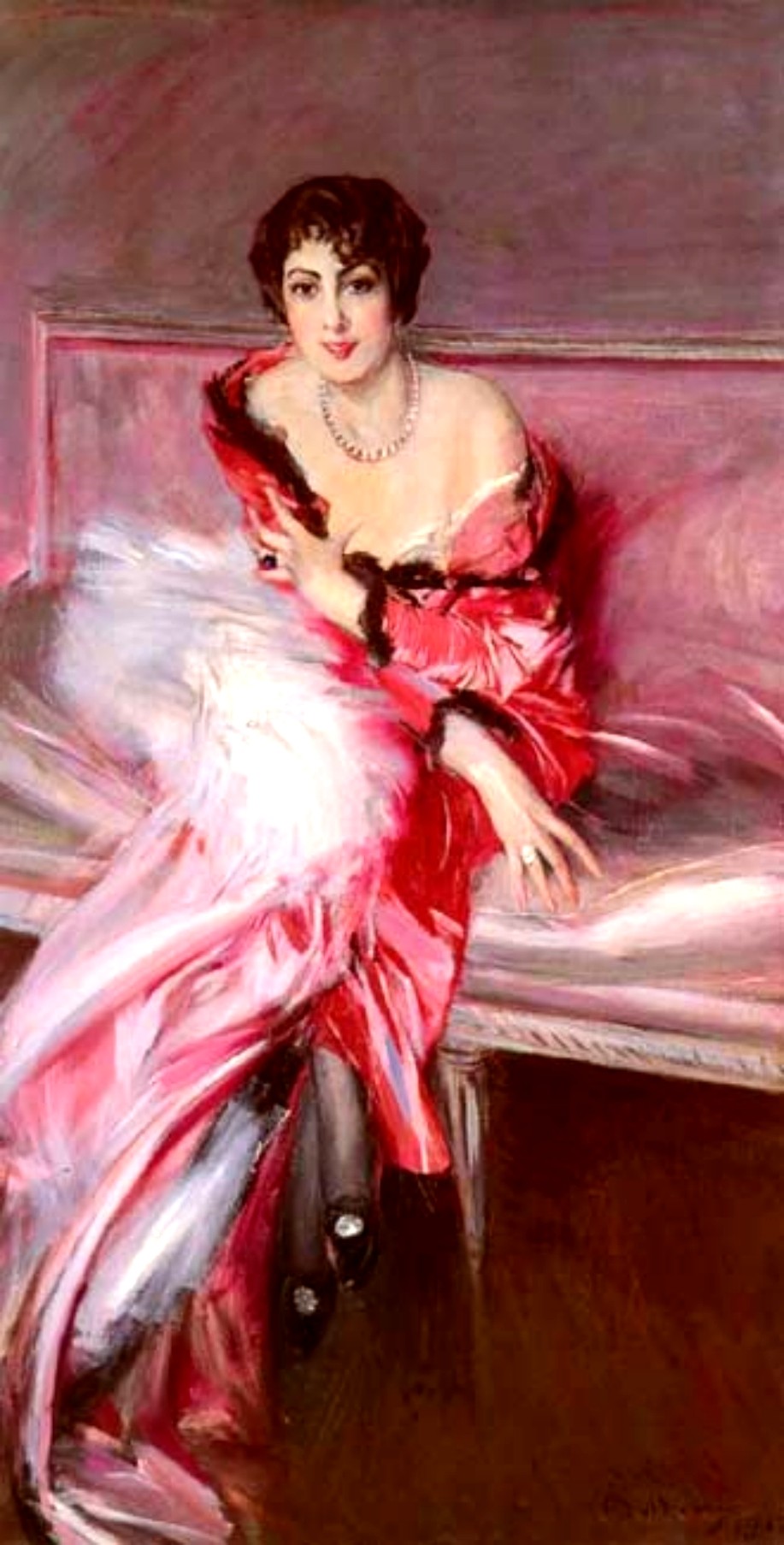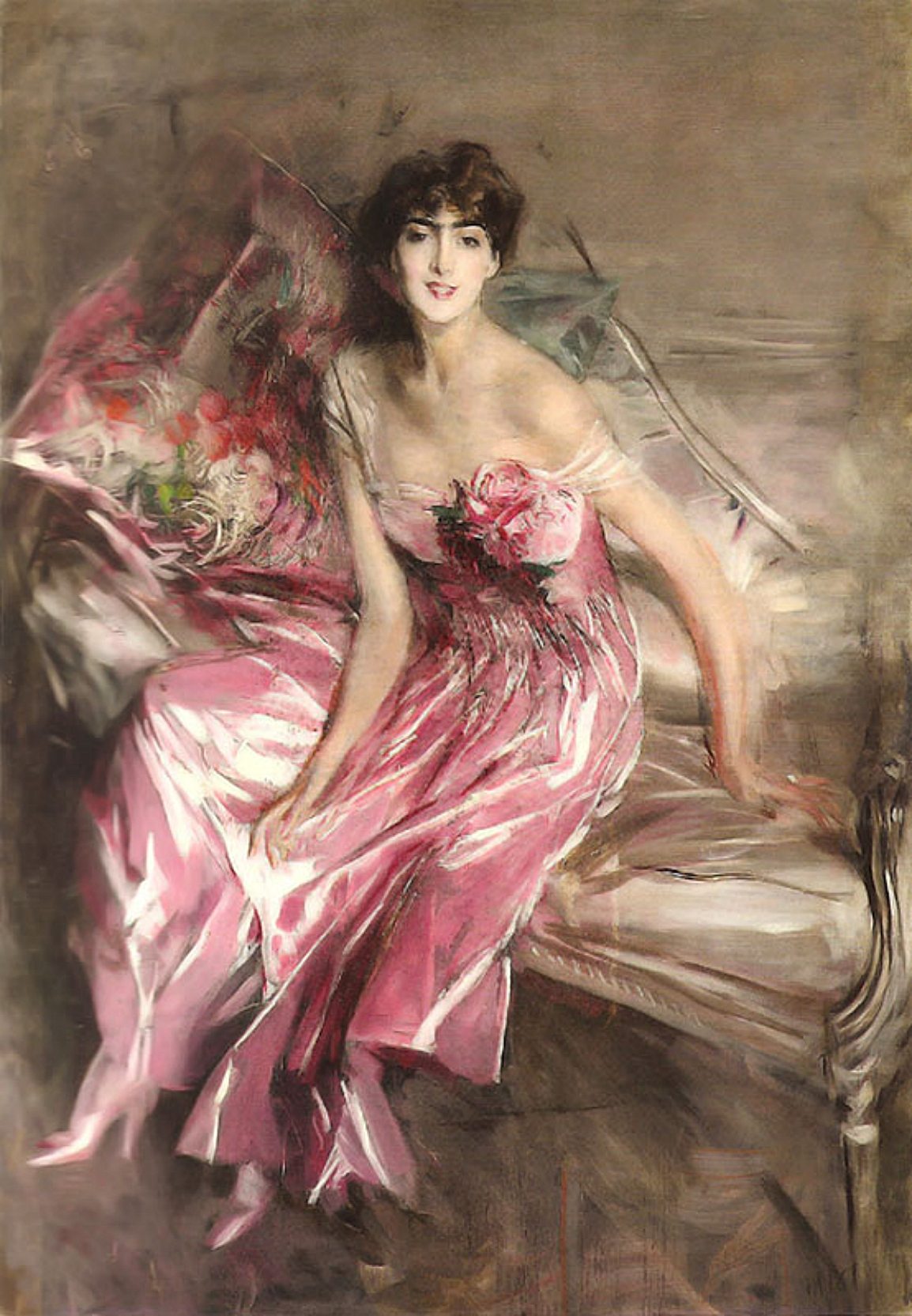IN ARTE EST LIBERTAS
MOVEMENTS-ARTISTS

La Passeggiata de Boulogne
Portrait of Rita De Acosta Lydig 1911
Portrait of Madame Juillard in Red
Madame E.L.Doyen 1910
La Signora in Rosa 1916
Contessa Vicki 1905
THE ART NOUVEAU
GIACOMO BALLA
Turin 1871
Rom 1958
BIOGRAPHY
Italian painter, sculptor, stage designer and designer
Giacomo Balla was born in Turin in 1871.
The autodidact first painted landscapes based
on nature and portraits. Short, irregular
brush strokes and agitated lighting already
showed his closeness to Divisionism. In 1900
Bala spent nine months in Paris, where he
discovered the existencial space of the metropolis
on the light-flooded and crowded nightly
boulevards. The impressions gathered in Paris
later influenced his futuristic pictures,
in which he used a chronophotographic analysis
of movement taken from photography and artificial
light as a means of expression. Marinetti's
famous thesis on literary Futurism was published
in 1909. In it Balla found his own ideas
confirmed. In 1910 Balla wrote the 'Manifesto
dei pittori futuristi' and the 'Manifesto
tecnico della pittura futurista' together
with U. Boccioni, C. Carrą, G. Severini and
L. Russolo. Bala's first futuristic picture
'Dinamismo di un cane al guinzaglio' (1912)
shows, how Bala analysed movement and expressed
the various phases of movement by superimposing
the individual abstracted shapes. From 1913
Giacomo Balla signed his pictures 'Futur
Balla'. The chromatic dissection of light
and the segmentation of moving objects and
figures into geometrical shapes were taken
to the limits of abstraction. Balla also
worked in the area of applied art. He designed
clothing and produced carpets, vases and
lamps. He experimented with objects made
of various materials such as cardbord, fabric,
aluminium foil, mirrors and colored glass.
With these 'complessi plastici' Balla became
one of the co-founders of abstract sculpture.
Around 1930 Balla gradually moved away from
Futurism and in 1937 returned to traditional
representational art and the veristic representation
of themes from his youth. Giacomo Balla died
in Rome in 1958.
The Art Nouveau
(the "new art")
was a widely influential but relatively short-lived
movement that emerged in the final decade
of the 19th century and was already beginning
to decline a decade later. This movement
- less a collective one than a disparate
group of visual artists, designers and architects
spread throughout Europe was aimed at creating
styles of design more appropriate to the
modern age, and it was characterized by organic,
flowing lines- forms resembling the stems
and blossoms of plants - as well as geometric
forms such as squares and rectangles.
The advent of Art Nouveau can be traced to
two distinct influences: the first was the
introduction, around 1880, of the Arts and
Crafts movement, led by the English designer
William Morris. This movement, much like
Art Nouveau, was a reaction against the cluttered
designs and compositions of Victorian-era
decorative art. The second was the current
vogue for Japanese art, particularly wood-block
prints, that swept up many European artists
in the 1880s and 90s, including the likes
of Gustav Klimt, Giacomo Balla , Emile Galle
and James Abbott McNeill Whistler. Japanese
wood-block prints contained floral and bulbous
forms, and "whiplash" curves, all
key elements of what would eventually become
Art Nouveau.
It is difficult to pinpoint the first work(s)
of art that officially launched Art Nouveau.
Some argue that the patterned, flowing lines
and floral backgrounds found in the paintings
of Vincent van Gogh and Paul Gauguin represent
Art Nouveau's birth, or perhaps even the
decorative lithographs of Henri de Toulouse-Lautrec,
such as La Goule at the Moulin Rouge (1891).
But most point to the origins in the decorative
arts, and in particular to a book jacket
by English architect and designer Arthur
Heygate Mackmurdo for the 1883 volume Wren's
City Churches. The design depicts serpentine
stalks of flowers coalescing into one large,
whiplashed stalk at the bottom of the page,
clearly reminiscent of Japanese-style wood-block
prints.
Although Art Nouveau has become the most
commonly used name for the movement, its
wide popularity throughout Western and Central
Europe meant that it went by several different
titles. The most well-known of these was
Jugendstil (Youth Style), by which the styles
was known in German-speaking countries. Meanwhile
in Vienna - home to Gustav Klimt, Otto Wagner,
Josef Hoffmann and the other founders of
the Vienna Secession - it was known as Sezessionsstil
(Secession Style). It was also known as Modernismo
in Spain and stile Liberty in Italy (after
Arthur Liberty's fabric shop in London, which
helped popularize the style). It also went
by some more derogatory names: Style Nouille
(noodle style) in France, Paling Stijl (eel
style) in Belgium, and Bandwurmstil (tapeworm
style) in Germany, all of which made playful
reference to Art Nouveau's tendency to employ
sinuous and flowing lines.
Art Nouveau's ubiquity in the late 19th century
must be explained in part by many artists'
use of popular and easily reproduced forms
such as graphic art. In Germany, Jugendstil
artists like Peter Behrens and Hermann Obrist,
among many others, had their work printed
on book covers and exhibition catalogs, magazine
advertisements and playbills. But this trend
was by no means limited to Germany. The English
illustrator Aubrey Beardsley, perhaps the
most controversial Art Nouveau figure due
to his combination of the erotic and macabre,
created a number of posters in his brief
career that employed graceful and rhythmic
lines. Beardsley's highly decorative prints,
such as The Peacock Skirt (1894), were both
decadent and simple, and represent the most
direct link we can identify between Art Nouveau
and Japonisme.
Despite its popularity - both in terms of
its geographical spread and its influence
on the creation of so many media - Art Nouveau
enjoyed very few moments during its heyday
when all artistic elements came together
to be recognized as a coherent whole. One
exception was the 1900 World's Fair in Paris
(Exposition Universelle), where the Art Nouveau
style was present in all its forms. Of particular
note was the construction and opening of
the Grand Palais in 1900, a building which,
although in the Beaux Arts tradition, contained
an interior glass dome that clearly adopted
the Art Nouveau decorative style. Other exhibitions
took place throughout the continent during
this time, but none could claim to be celebrating
Art Nouveau in such a comprehensive manner
as had the Paris Expo.
If Art Nouveau quickly stormed Europe in
the late 19th century, artists, designers
and architects abandoned it just as quickly
in the first decade of the 20th century.
Although the movement had made the doctrine
that "form should follow function"
central to their ethos, some designers tended
to be lavish in their use of decoration,
and the style began to be criticized for
being overly elaborate. In a sense, as the
style matured, it started to revert to the
very habits it had scorned, and a growing
number of opponents began to charge that
rather than renewing design, it had merely
swapped the old for the superficially new.










